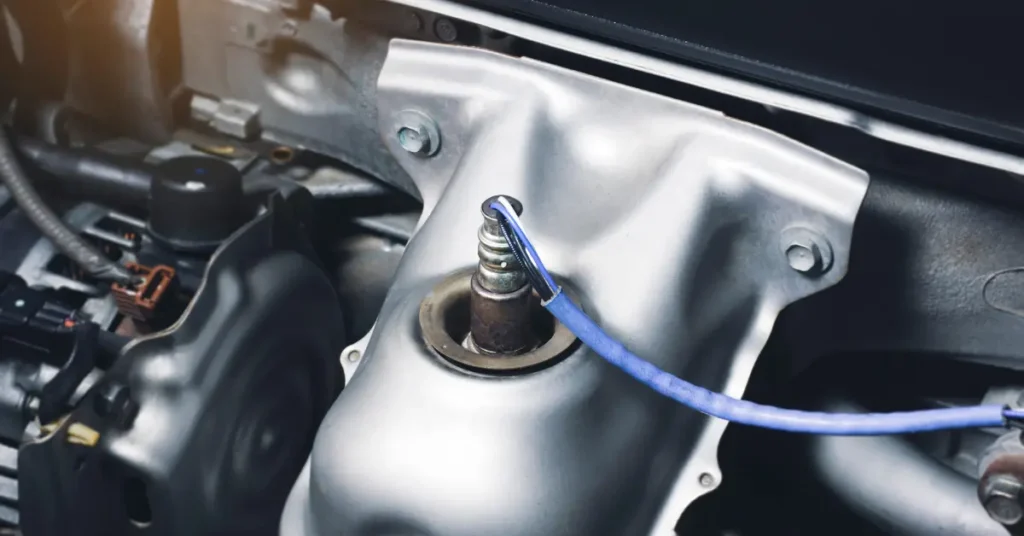
The P0420 Toyota code is a common diagnostic trouble code (DTC) that indicates a problem with the catalytic converter in a Toyota vehicle. This code specifically refers to Bank 1, which is the side of the engine where cylinder 1 is located.
When this code is triggered, it means that the catalytic converter is not performing its job effectively, resulting in higher emissions.
Dive into the depths of the P0420 code, and you might find it shares a common language with Toyota. Speak the language of diagnostics.
Contents
- 1 Understanding the P0420 Toyota Code
- 2 Causes of the P0420 Code
- 3 Diagnosing and Resolving the P0420 Code
- 4 Preventive Maintenance for a Healthy Catalytic Converter
- 5 Conclusion
- 6 FAQ
- 6.1 1. What does the P0420 code indicate in a Toyota vehicle?
- 6.2 2. What are the potential causes of the P0420 code in a Toyota vehicle?
- 6.3 3. How can the P0420 code be diagnosed and resolved in a Toyota vehicle?
- 6.4 4. What preventive maintenance measures can be taken to maintain a healthy catalytic converter in a Toyota vehicle?
Understanding the P0420 Toyota Code
The P0420 code is often associated with issues related to the catalytic converter’s efficiency. It is typically triggered when the oxygen sensor downstream of the catalytic converter detects a reduction in its ability to convert harmful gases into less harmful substances.
This reduction in efficiency can be caused by various factors, such as a failing or damaged catalytic converter, faulty oxygen sensors, exhaust leaks, fuel system problems, or engine misfires.
The catalytic converter plays a crucial role in reducing harmful emissions by converting toxic gases, such as carbon monoxide and nitrogen oxides, into less harmful substances, such as carbon dioxide and nitrogen.
When the catalytic converter is not functioning properly, it can lead to increased emissions, which can contribute to air pollution and environmental damage.
Causes of the P0420 Code
There are several potential causes for the P0420 code to appear in a Toyota vehicle. These include:
Faulty Catalytic Converter
The most common cause is a failing or damaged catalytic converter. Over time, the converter can become clogged or worn out, reducing its efficiency.
This can be due to factors such as exposure to high temperatures, contamination from engine oil or coolant leaks, or the accumulation of debris and pollutants.
Oxygen Sensor Issues

A faulty oxygen sensor can cause inaccurate readings, leading to the P0420 code being triggered. This may happen if the sensor is old or contaminated.
The oxygen sensors monitor the oxygen levels in the exhaust gases and provide feedback to the engine control module (ECM) to adjust the air-fuel mixture for optimal combustion.
If the sensors are not functioning properly, it can affect the catalytic converter’s performance.
Exhaust Leaks
Leaks in the exhaust system, such as a cracked manifold or damaged gasket, can cause improper readings and trigger the P0420 code. These leaks can allow excess oxygen to enter the exhaust stream, disrupting the catalytic converter’s ability to convert harmful gases effectively.
Additionally, leaks can lead to increased noise levels and decreased engine performance.
Fuel System Problems
Issues with the fuel system, such as a faulty fuel injector or excessive fuel consumption, can affect the catalytic converter’s performance.
If the fuel system is not delivering the correct air-fuel mixture, it can result in incomplete combustion, leading to higher emissions and potential damage to the catalytic converter.
Engine Misfire
A misfiring engine can produce unburned fuel, which can damage the catalytic converter over time. An engine misfire occurs when there is a problem with the ignition system, such as faulty spark plugs or ignition coils, or issues with the fuel system, such as a clogged fuel injector.
These problems can disrupt the combustion process and cause unburned fuel to enter the exhaust system, impacting the catalytic converter’s efficiency.
Diagnosing and Resolving the P0420 Code
When faced with the P0420 code, it is essential to determine the underlying cause to effectively repair the issue. Here are some steps to diagnose and resolve the problem:
Check for Other Codes
Start by checking for any additional DTCs, as they may provide clues about related issues that could be contributing to the P0420 code. Addressing these additional issues can help ensure a comprehensive repair.
Inspect the Catalytic Converter
Visually examine the catalytic converter for signs of damage, such as cracks, holes, or excessive rust.
Additionally, check for any loose heat shields or physical obstructions that may be affecting its performance. If any issues are found, it may be necessary to replace the converter.
Test the Oxygen Sensors
Use an OBD-II scanner to monitor the oxygen sensor readings while the engine is running.
Compare the readings of the downstream sensor (located after the catalytic converter) to the upstream sensor (located before the catalytic converter).
If the downstream sensor’s readings are similar to the upstream sensor’s readings, it could indicate a failing catalytic converter. However, it is important to consider other factors, such as exhaust leaks or fuel system problems, that may affect the sensor readings.
Check for Exhaust Leaks

Inspect the exhaust system for any leaks or damage. Pay close attention to the manifold, gaskets, and connections between the components. Repair or replace any components as necessary to restore the integrity of the exhaust system.
Address Fuel System Problems
If there are any fuel system issues, such as a faulty fuel injector or excessive fuel consumption, they should be resolved to ensure proper combustion and prevent damage to the catalytic converter.
This may involve cleaning or replacing the fuel injectors, inspecting the fuel pressure regulator, or addressing any fuel system leaks.
Address Engine Misfires
If an engine misfire is detected, diagnose and repair the underlying cause. This may involve replacing spark plugs, ignition coils, or other related components.
Additionally, ensure that the ignition timing and fuel delivery system are properly calibrated for optimal combustion.
Reset the Code
After addressing the potential causes, clear the code using an OBD-II scanner and take the vehicle for a test drive to see if the P0420 code returns. If it does not reappear, the repair was likely successful.
However, it is recommended to monitor the vehicle’s performance and emissions over time to ensure that the issue is fully resolved.
Preventive Maintenance for a Healthy Catalytic Converter
To prevent future occurrences of the P0420 code and maintain a healthy catalytic converter in your Toyota vehicle, consider the following preventive maintenance measures:
Regular Maintenance
Adhere to the recommended maintenance schedule for your vehicle, including regular oil changes and engine tune-ups. This helps ensure the engine runs smoothly and reduces the risk of damage to the catalytic converter.
Additionally, follow the manufacturer’s guidelines for replacing the catalytic converter at the recommended intervals.
Use Quality Fuel
Always use high-quality fuel to minimize the chances of fuel system issues and reduce the risk of engine misfires. High-quality fuel contains fewer impurities and additives that can potentially harm the catalytic converter.
Avoid Engine Stress
Avoid excessive idling, aggressive driving, and overloading the vehicle. These actions can put unnecessary stress on the engine and catalytic converter.
Additionally, avoid driving through deep water or off-road conditions that can expose the catalytic converter to excessive heat, impacts, or debris.
Keep the Exhaust System Intact
Regularly inspect the exhaust system for any signs of damage or leaks. Pay attention to the manifold, gaskets, pipes, and muffler. Address any issues promptly to prevent further damage to the catalytic converter.
Additionally, ensure that the exhaust system is properly aligned and secured to minimize vibrations and potential damage.
Replace Oxygen Sensors
Over time, oxygen sensors can become less accurate, leading to improper readings and potential catalytic converter damage. Consider replacing them as part of regular maintenance, following the manufacturer’s recommendations.
This can help maintain the catalytic converter’s efficiency and prevent the recurrence of the P0420 code.
Conclusion
The P0420 code in a Toyota vehicle indicates a problem with the catalytic converter’s efficiency. It is crucial to diagnose and resolve the underlying cause to prevent further damage and ensure compliance with emissions regulations.
By following the suggested diagnostic steps and practicing preventive maintenance, you can keep your Toyota’s catalytic converter in optimal condition, helping to reduce emissions and maintain the vehicle’s performance.
While troubleshooting the P0420 code in your Infiniti, it’s enlightening to grasp the broader context—a challenge tied to catalytic converter efficiency that transcends specific brands.
FAQ
1. What does the P0420 code indicate in a Toyota vehicle?
The P0420 code indicates a problem with the catalytic converter’s efficiency in a Toyota vehicle. It specifically refers to Bank 1, which is the side of the engine where cylinder 1 is located.
This code is triggered when the catalytic converter is not effectively converting harmful gases into less harmful substances, resulting in higher emissions.
2. What are the potential causes of the P0420 code in a Toyota vehicle?
The potential causes of the P0420 code in a Toyota vehicle include a faulty catalytic converter, oxygen sensor issues, exhaust leaks, fuel system problems, and engine misfires. These factors can reduce the catalytic converter’s efficiency and lead to increased emissions.
3. How can the P0420 code be diagnosed and resolved in a Toyota vehicle?
To diagnose and resolve the P0420 code in a Toyota vehicle, you can follow these steps:
- Check for other codes that may provide clues about related issues.
- Inspect the catalytic converter for damage or obstructions.
- Test the oxygen sensors to compare readings before and after the catalytic converter.
- Check for exhaust leaks and repair any damage.
- Address fuel system problems and engine misfires.
- Reset the code and monitor the vehicle’s performance.
4. What preventive maintenance measures can be taken to maintain a healthy catalytic converter in a Toyota vehicle?
To maintain a healthy catalytic converter in a Toyota vehicle and prevent the recurrence of the P0420 code, consider the following preventive maintenance measures:
- Adhere to the recommended maintenance schedule, including regular oil changes and engine tune-ups.
- Use high-quality fuel to minimize the risk of fuel system issues and engine misfires.
- Avoid excessive idling, aggressive driving, and overloading the vehicle to reduce stress on the engine and catalytic converter.
- Regularly inspect the exhaust system for damage or leaks and address issues promptly.
- Consider replacing oxygen sensors as part of regular maintenance to maintain the catalytic converter’s efficiency.



